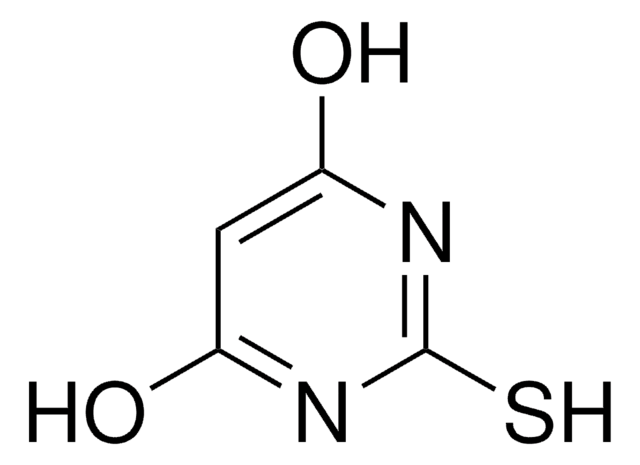404888
1-Methyl-2-phenylindol
99%
Synonym(e):
NSC 63793
Anmeldenzur Ansicht organisationsspezifischer und vertraglich vereinbarter Preise
Alle Fotos(1)
About This Item
Empirische Formel (Hill-System):
C15H13N
CAS-Nummer:
Molekulargewicht:
207.27
EG-Nummer:
MDL-Nummer:
UNSPSC-Code:
12352100
PubChem Substanz-ID:
NACRES:
NA.22
Empfohlene Produkte
Qualitätsniveau
Assay
99%
mp (Schmelzpunkt)
98-100 °C (lit.)
SMILES String
Cn1c(cc2ccccc12)-c3ccccc3
InChI
1S/C15H13N/c1-16-14-10-6-5-9-13(14)11-15(16)12-7-3-2-4-8-12/h2-11H,1H3
InChIKey
SFWZZSXCWQTORH-UHFFFAOYSA-N
Suchen Sie nach ähnlichen Produkten? Aufrufen Leitfaden zum Produktvergleich
Allgemeine Beschreibung
Reaction of 1-methyl-2-phenylindole with nitrogen dioxide or with nitrous acid (NaNO2-CH3COOH) in benzene has been studied. 1-Methyl-2-phenylindole is reported to react with malondialdehyde (MDA) and 4-hydroxyalkenals to afford a stable chromophore with intense maximal absorbance at 586nm.
Anwendung
1-Methyl-2-phenylindole may be used in the following studies:
- The estimation of lipid peroxidation in third instar larvae of transgenic Drosophila melanogaster (hsp70-lacZ)Bg.
- As chromogenic agent for the determination of estimation of malondialdehyde (MDA) production.
- Colorimetric assay of lipid peroxidation.
- Synthesis of 1-methyl-2-phenyl-3-(1,3,4-thiadiazol-2-yldiazenyl)-1H-indole.
- Synthesis of 3-(5-ethyl-1,3,4-thiadiazol-2-yldiazenyl)-1-methyl-2-phenyl-1H-indole.
Reactant for preparation of:
Reactant for:
- Cyano indoles
- Difluorohydroxy indoles
Reactant for:
- Carboxylation of indoles
- Allylation of indoles
- Formylation of indoles
- Nitrosylation of indoles
Signalwort
Warning
H-Sätze
Gefahreneinstufungen
Eye Irrit. 2 - Skin Irrit. 2 - STOT SE 3
Zielorgane
Respiratory system
Lagerklassenschlüssel
11 - Combustible Solids
WGK
WGK 3
Flammpunkt (°F)
Not applicable
Flammpunkt (°C)
Not applicable
Hier finden Sie alle aktuellen Versionen:
Besitzen Sie dieses Produkt bereits?
In der Dokumentenbibliothek finden Sie die Dokumentation zu den Produkten, die Sie kürzlich erworben haben.
Kunden haben sich ebenfalls angesehen
M E Nieves-Ramírez et al.
mSystems, 3(3) (2018-07-03)
Blastocystis is the most prevalent protist of the human intestine, colonizing approximately 20% of the North American population and up to 100% in some nonindustrialized settings. Blastocystis is associated with gastrointestinal and systemic disease but can also be an asymptomatic
Yasir Hasan Siddique et al.
Dose-response : a publication of International Hormesis Society, 10(1), 1-10 (2012-03-17)
Malondialdehyde (MDA) is used for the estimation of damage by reactive oxygen species. MDA is a major reactive aldehyde resulting from the peroxidation of biological membranes. The most common method used to assess MDA production is the thiobarbituric acid (TBARS)
Yasir Hasan Siddique et al.
Pharmaceutical methods, 3(2), 94-97 (2013-06-20)
A method using 1-methyl-2-phenylindole was developed for the estimation of lipid peroxidation in third instar larvae of transgenic Drosophila melanogaster (hsp70-lacZ)Bg (9). The method is specific for the estimation of malonaldehyde. The larvae were exposed to 0.0025, 0.025, 0.050, and
Marcin Magierowski et al.
Journal of gastroenterology, 53(1), 52-63 (2017-02-27)
Aspirin exerts side effects within the gastrointestinal tract. Hydrogen sulfide (H Wistar rats with or without capsaicin-induced denervation of sensory neurons were pretreated with vehicle, CORM-2 (5 mg/kg intragastrically), or NaHS (5 mg/kg intragastrically) with or without capsazepine (5 mg/kg intragastrically) or N
D Gérard-Monnier et al.
Chemical research in toxicology, 11(10), 1176-1183 (1998-10-20)
Under acidic and mild-temperature conditions, 1-methyl-2-phenylindole was found to react with malondialdehyde (MDA) and 4-hydroxyalkenals to yield a stable chromophore with intense maximal absorbance at 586 nm. The use of methanesulfonic acid results in optimal yields of chromophore produced from
Unser Team von Wissenschaftlern verfügt über Erfahrung in allen Forschungsbereichen einschließlich Life Science, Materialwissenschaften, chemischer Synthese, Chromatographie, Analytik und vielen mehr..
Setzen Sie sich mit dem technischen Dienst in Verbindung.









